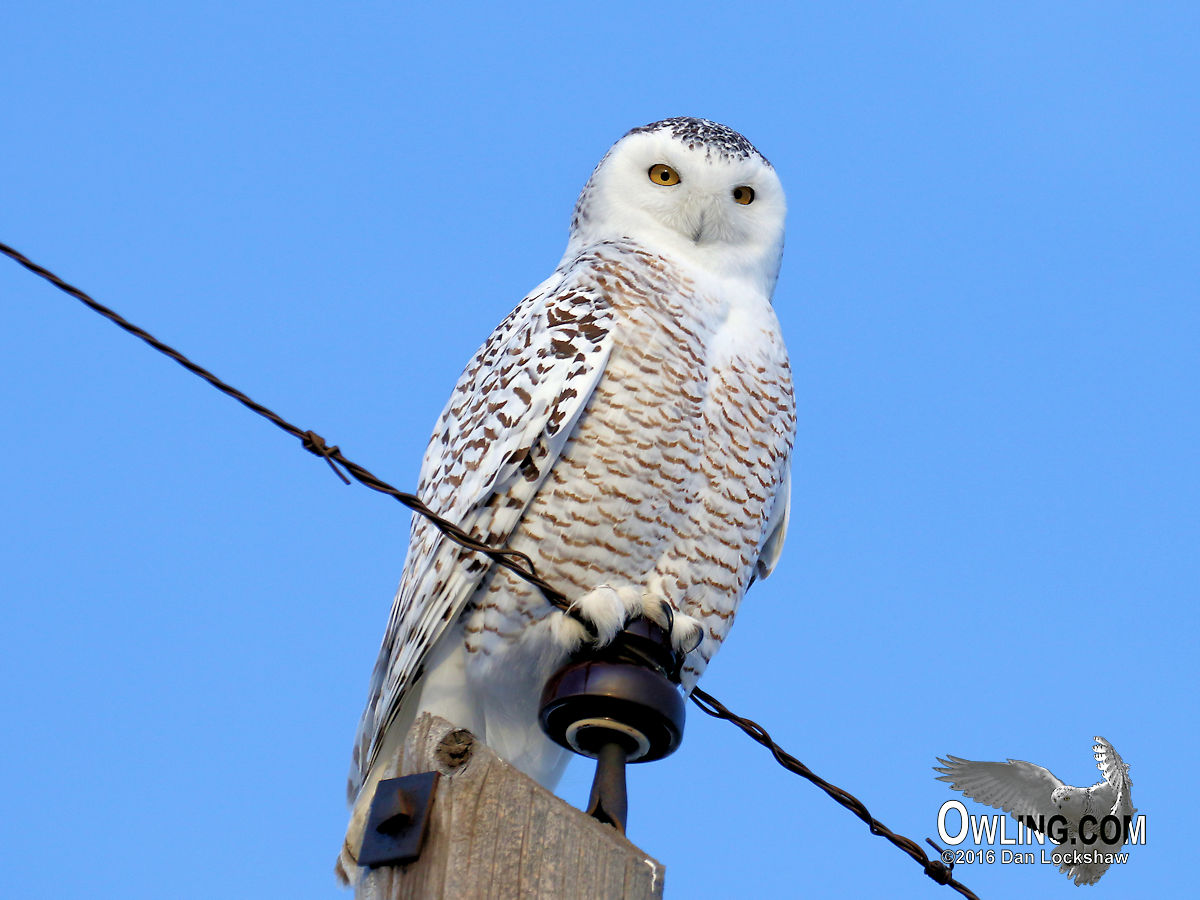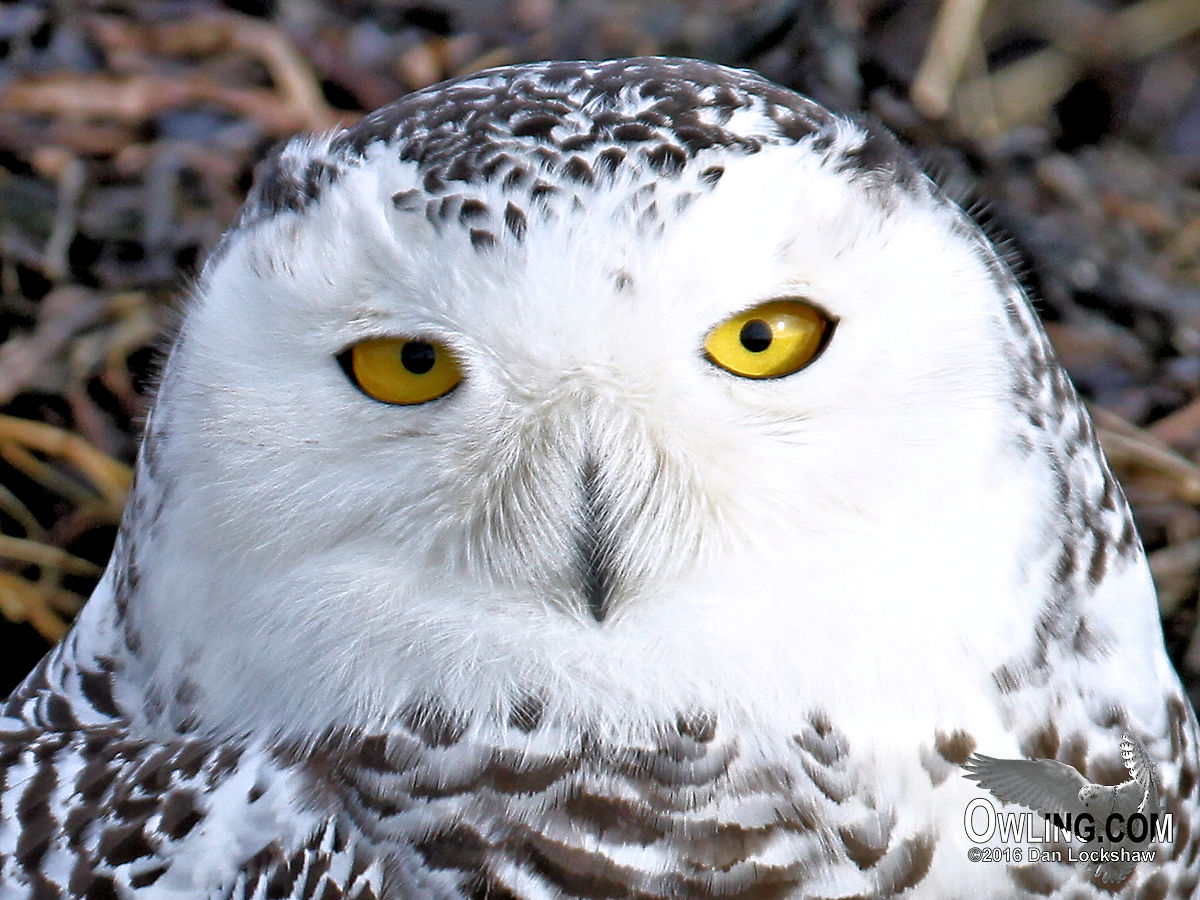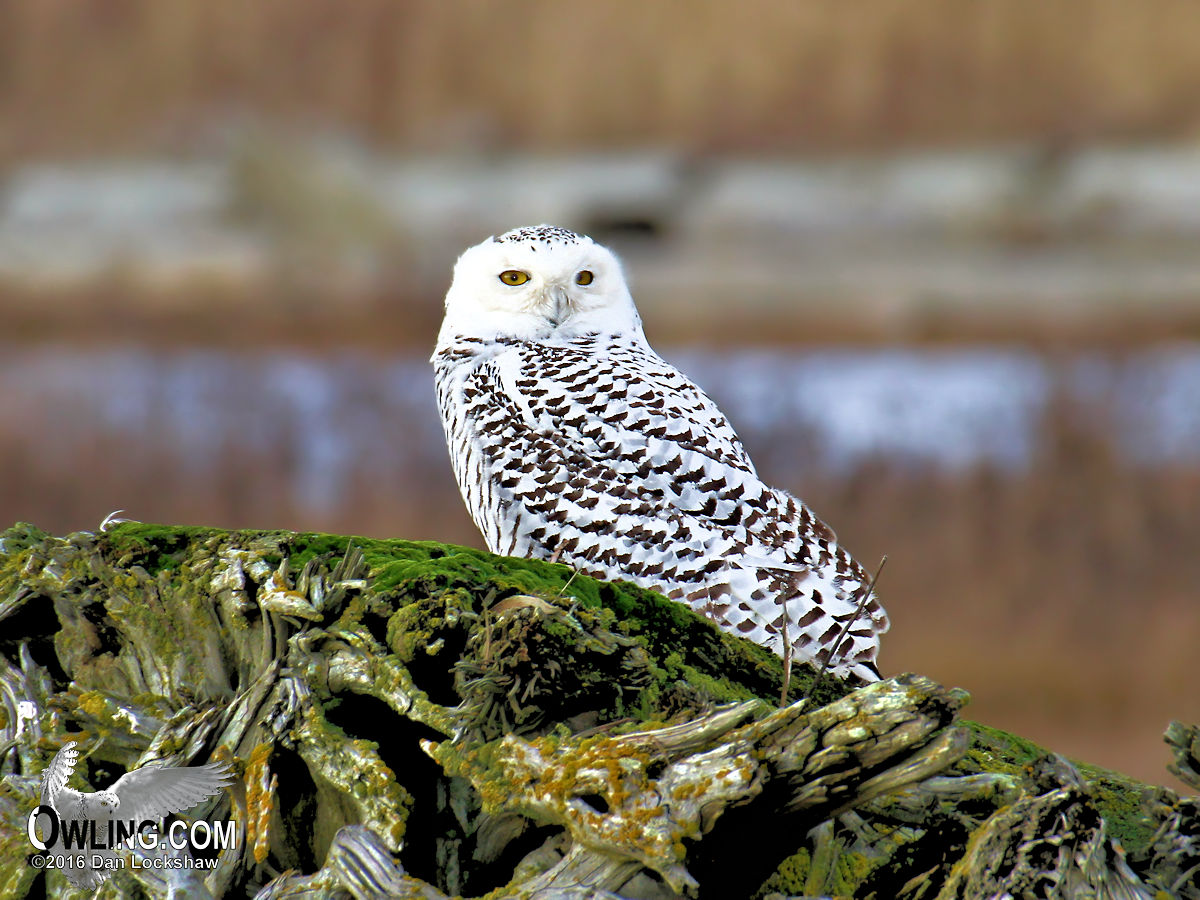Snowy Owl Biology
A Reference for North and Central American Owls
Name: Snowy Owl – Bubo (Nyctea) scandiacus
Other Common Names: Snow Owl; Arctic Owl; Great White Owl; White Owl
Subspecies: The Snowy Owl has no subspecies divisions.
Measurements and Weights:
Wingspan: 54 – 66 in.
Length: 20 – 27 in.
Tail: 8 3/4 – 10 3/4 in.
Average Weight:
Male (North American): 58 1/2 oz.
Male (Eurasia): 61 1/2 oz.
Average Weight: Female (North American): 61 1/2 oz.
Average Weight: Female (Eurasia): 80 oz.
Description: The Snowy Owl is a large owl with poorly developed ear tufts that are usually not visible. The male can be entirely immaculate white although usually shows some spots or bars of dark slatey brown or black on the crown, back, wings, and/or tail. His under parts are also generally marked with narrow bars on the abdomen, flanks, and sides. The adult female is much more heavily barred and noticeably larger. Only her face, center part of breast, and back of neck are unmarked white. The barring also tends to be more blackish. Both male and female have small, in comparison with other owls, brilliant yellow iris. The Snowy Owl is primarily diurnal (active in daytime). It is the most massive (greatest average weight) of the North American Owls and believed, by many, to be the most powerful. It has feathered feet and its large sharp talons and dull black bill are almost buried in its fluffy white feathers. It is also almost totally silent outside of its breeding grounds.
Young: The hatchlings are initially covered in white down that turns gray, except throat and facial disk, after about 10 days. Juvenile owls are light brown with white tips of down. The young owls become like the adult females in plumage with the young females having the heaviest barring and streaking.




